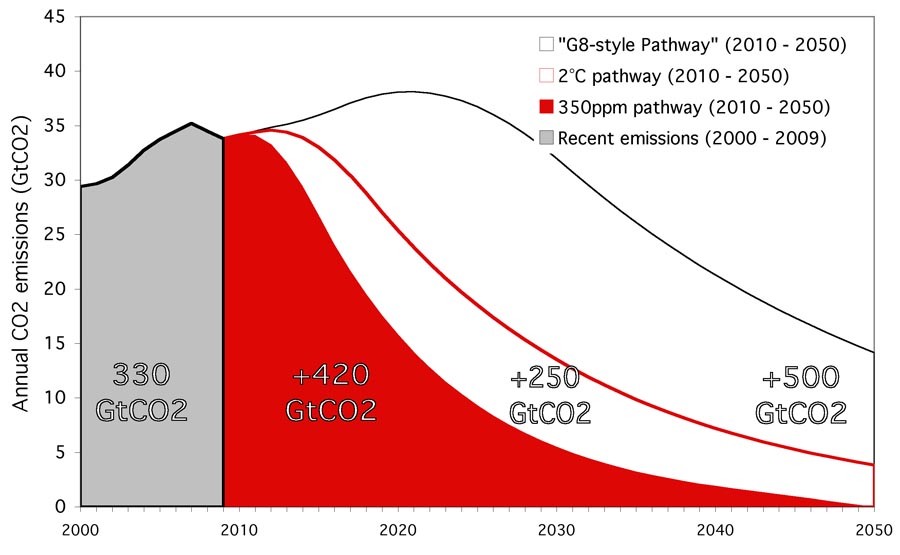Carbon Budget
The idea of a global “carbon budget” receives its legitimacy from the fact that long-term anthropogenic climate changes depend mainly on the amount of cumulative CO2 emissions (see the recent IPCC report).
This was translated in 2009 by the German WBGU into the “budget approach” which starts by defining a global amount of admissible fossil CO2 emissions that would provide us with a certain probability of meeting a certain degree target at current scientific understanding. The WBGU picked a 67-75% probability of staying under a 2°C global mean temperature (GMT) increase.

This budget would then be distributed among the countries of the world on an equal per-capita basis. This seemed one of the most straightforward and just proposals that are in tune with science at the time. But it has not received the necessary support at the UN climate negotiations. The absence of both a carbon budget as well as a per capita calculation from emissions targets is notable in the Copenhagen Accord (here you can find the pledged 2020 “reductions” in real, per capita terms) and subsequent negotiation results.
How big the remaining carbon budget is, depends on the temperature target (1°, 1.5° or 2°C GMT rise) and the probability of exceeding the target that we want to allow (e.g. 50%, 33%, 25% or 10%). If we take the target of 1°C from the Cochabamba Agreement, then we are already in debt and have to stop burning fossil fuels, and must still capture CO2 from the atmosphere. If we take the latest IPCC numbers, which accept a 33% chance of missing a 2°C target, the budget is about 1000 Gigatons of CO2, roughly equivalent to 25 years of status quo emissions and 27% of fossil reserves. But there are good reasons to believe that the IPCC is – once more – erring on the wrong side, i.e. being too conservative about the possible impacts of our emissions. If we accept the 1.5°C target – in solidarity with the impacted nations calling for it, we only have 6 years of status quo emissions left.
The carbon budget in turn, gives rise to the carbon bubble, which is created by the fact that stock markets currently assume that a large amount of oil, coal and gas underground would at some point be extracted and sold. This would lead to global warming exceeding the current 2° budget by several hundred percent – climate catastrophe.
After two decades of almost complete inaction, the carbon budget has dwindled while emission levels are higher than ever. The option now left is complete decarbonization of the world economy in a few decades.
Different countries are starting out at different points of the scale of entanglement in the fossil age. With the following questionnaire you can assess at what stage your country finds itself: UNFCCC Zero Emissions Inventory
Here are the numbers for the Carbon Budget after the Paris Agreement.



